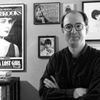It's one thing for an orchestra to accompany a silent film. It is something else all together for an orchestra to accompany a sound film, let alone a musical.
The level of expectation, as well as the technical and performance challenges faced by musicians accompanying a movie whose original score has been stripped from its soundtrack, are considerable to say the least.
That's the challenge the San Francisco Symphony will face on December 6 and 7, when the world renown orchestra accompanies the classic musical, Singin' in the Rain.
The 1952 film, one of most beloved movies of all time, is widely considered the greatest musical ever made. In fact, the film has appeared in numerous top ten lists of the greatest films in history -- all genres aside. In 1989, Singin' in the Rain was among the first 25 films chosen for the then newly established National Film Registry, honoring motion pictures deemed "culturally, historically or aesthetically significant" by the Library of Congress.
The San Francisco Symphony faced a similar challenge last month when it accompanied the Alfred Hitchcock masterworks Psycho (1960) and Vertigo (1958). The Bernard Herrmann score for the latter film is considered by some the greatest Hollywood score of all time, and the Symphony accompanied it to near perfection.
Singin' in the Rain was originally conceived by legendary MGM producer Arthur Freed, the head of a unit responsible for many of MGM's lavish musicals. Freed envisioned the film as a vehicle for his catalog of songs written with Nacio Herb Brown, many of them for MGM film musicals dating from 1929-1939.
Most all of the songs in Singin' in the Rain -- such as "You Were Meant for Me" (from The Broadway Melody, 1929), "Should I?" (from Lord Byron of Broadway, 1930), "Would You?" (from San Francisco, 1936), "Good Morning" (from Babes In Arms, 1939), and notably "Singin' in the Rain" (from Hollywood Revue of 1929), had been featured in earlier films.
Screenwriters Betty Comden and Adolph Green, who contributed lyrics to one new song ("Moses Supposes"), were given the task of stringing these musical numbers together into a story. And they did so brilliantly.
Like the popular Academy Award winning film The Artist (2011), Singin' in the Rain tells a story which takes place during the period when silent film was being replaced by "talkies." The film follows the struggles of the studios and various actors as they attempt to transition to the new medium.
Co-directed by Gene Kelly and Stanley Donen, Singin' in the Rain stars Kelly, Donald O'Connor and then newcomer Debbie Reynolds. Also in the cast are Jean Hagen (who received an Oscar nomination for best supporting actress for her role as a character based on the silent star Norma Talmadge), Cyd Charisse (as a Louise Brooks-like vixen), and Rita Moreno (playing a character not unlike "It Girl" Clara Bow). In uncredited roles were familiar character actor Kathleen Freeman (as a diction coach), Mae Clarke (the grapefruit girl from The Public Enemy), and Judy Landon (as a silent screen vamp inspired by Pola Negri). Kelly was also responsible for much of the film's choreography.
The San Francisco Symphony, conducted by Sarah Hicks, accompanies the film live in what promises to be a not-to-be-missed holiday event. Visit the San Francisco Symphony website for additional details.
Thomas Gladysz is a Bay Area arts journalist and film enthusiast. He is also the founding director of the Louise Brooks Society, an online archive and international fan club devoted to the iconic silent film star. Gladysz has organized exhibits on the actress at the San Francisco Public Library, and introduced Louise Brooks' films at the Castro Theater, Balboa Theater, Niles Essanay Silent Film Museum, and elsewhere around the world.
